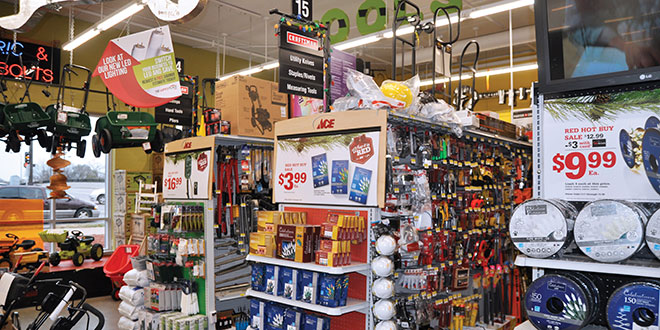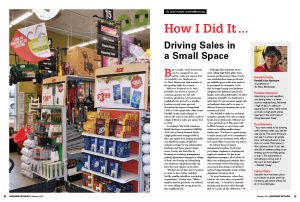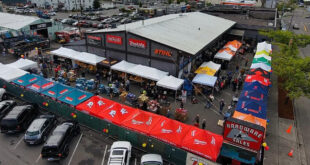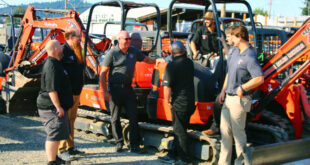Click the picture to download a PDF of this story.
By Chad Husted, chusted@nrha.org
Driving Sales in a Small Space
Big or small, retail businesses can be compared by one metric: sales per square foot. At Kendall’s Ace Hardware in St. Paul, Minnesota, that number is the guiding light for success.
With two locations in St. Paul, Kendall’s Ace serves a variety of consumer groups. Its east side location, situated in a lower-income neighborhood, moved to a smaller location several years ago and downsized its square footage from 7,500 to 5,300 square feet. After owner Kendall Crosby made changes to refocus the store, it was able to achieve a high of $422 in sales per square foot in 2018.
According to the North American Retail Hardware Association’s (NRHA) 2018 Cost of Doing Business Study, a high-profit store averages $240 in sales per square foot, making Kendall’s Ace Hardware nearly double the industry average for top independent hardware and home improvement stores. Crosby has done this by focusing on inventory management, putting department managers in charge of their own buying and identifying core hardware departments that can have the most impact on his sales.
“We first moved this store’s location in order to have better visibility, but the smaller salesfloor was giving us problems,” Crosby says. “With a smaller area for products, we realized we were selling the wrong items for this neighborhood.”
Although other hardware stores were selling high-ticket grills, lawn mowers and houseware items, Crosby was watching those same goods take up valuable space in his store and not be purchased by customers. To fix this, he began buying core hardware categories like fasteners, hand tools, hinges, bolts and paintbrushes. On these categories, Kendall’s Ace Hardware is achieving 51.7 percent gross margin rate on hardware items and is on pace to achieve 96 percent accuracy rate on its inventory in 2019.
“We decided to make our inventory numbers a priority. Not only no empty hooks, but no thin hooks with just one or two products on it. This store will be filled, because we can’t miss a sale when we’re selling smaller items,” Crosby says. “You have to spend money to make money, and we’re committed to making sure our inventory levels reflect how much effort we put into our stores.”
To achieve those inventory management numbers, Crosby has put a larger emphasis on training and employee retention. He has seven department managers, all of whom do their own ordering and maintain their own inventory levels. This keeps any one person from being overwhelmed and not being intimately aware of their department inventory level.
“At most businesses, when they need to cut costs, they cut payroll,” Crosby says. “I decided to increase training and increase sales through that. It’s made all the difference.”

Kendall Crosby
Kendall’s Ace Hardware
2 Locations in St. Paul, Minnesota
Problem Resolved
Maximizing a small salesfloor and driving sales in a lower-income neighborhood. Achieved a high of $422 in sales per square foot in 2018, nearly twice as much as high-profit stores reported in the 2018 Cost of Doing Business Study.
Key Takeaway
“Your store needs to be bursting with inventory when you sell the way we do. The worst thing you can see in a store is an empty hook, and second-worst is one item on a hook. Think about it like a grocery store: If you see one box of crackers sitting on an endcap, you’re not likely going to buy it. The assumption is something is wrong with it. We can’t let that happen.”
—Kendall Crosby
Future Plans
Kendall’s Ace Hardware plans to increase its gross profit by furthering education efforts for all of its employees.
 Hardware Retailing The Industry's Source for Insights and Information
Hardware Retailing The Industry's Source for Insights and Information








